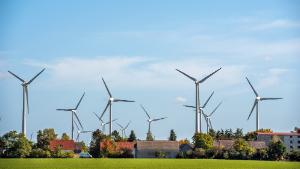For years, carbon dioxide has been the bogeyman of climate change, and rightly so. But the focus on CO2 has allowed other greenhouse gasses to slide under the radar. Methane, in particular – a potent greenhouse gas with more than 80 times the warming power of carbon dioxide, pound-for-pound, over a 20-year period – has been overlooked.
Lately, new science has helped policymakers realize that not only is methane a powerful climate threat – it also represents a crucial opportunity to slow the rate of warming quickly. And the faster we act, the bigger that opportunity will be.
Human-caused methane is emitted from fossil fuel operations, agriculture, coal mining, landfills and other industries. It’s also the main component of natural gas and is responsible for more than a quarter of current global warming, according to the United Nations Environment Programme.
Methane’s high potency is a problem, but the silver lining is that it dissipates in the atmosphere after about a decade, whereas carbon dioxide can last centuries. It means that efforts to reduce methane emissions offer the fastest route to slowing global warming.
By cutting methane pollution from human-caused sources as quickly as possible, scientists estimate we could slow the worldwide rate of warming by as much as 30%.
New findings from my colleagues and I at the Environmental Defense Fund suggest that immediate action to reduce methane emissions, along with drastic cuts in CO2, could help preserve Arctic summer sea ice through 2100 and beyond. This is a critical climate milestone that can help preserve habitat for Arctic wildlife and avert additional acceleration of warming.
Methane from fossil fuel production is often emitted alongside other chemicals — like volatile organic compounds — which contribute to ozone, another greenhouse gas. So reducing methane emissions can also help lower surface levels of ozone, benefiting air quality and crop yields.



